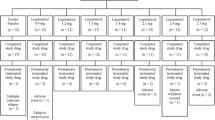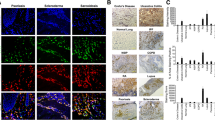Abstract
A number of mechanisms have been proposed to explain the etiology of drug-induced lupus (DIL) but the effect of apoptotic and necrotic cell handling has not been previously examined.
Objective. To evaluate the effect of quinidine and procainamide at therapeutic range concentrations, on the uptake of apoptotic and necrotic thymocytes by murine peritoneal macrophages and on macrophage survival, as a novel mechanism for DIL.
Methods. Thymocytes were stained and induced to undergo apoptosis by serum withdrawal. Apoptosis was evaluated using annexin V and propidum iodide (PI) and PI staining. Necrosis was induced by heating. Peritoneal macrophages were treated with quinidine or procainamide at a range of therapeutic concentrations and incubated with stained apoptotic and necrotic thymocytes. Apoptotic and necrotic cell uptake was evaluated by flow cytometry using double staining of thymocytes and macrophages and by confocal microscopy. Green fluorescent latex beads were used as controls for phagocytosis.
Results. Significantly decreased uptake of apoptotic and necrotic cells was seen in the presence of quinidine and procainamide. The documented effect was mainly on the number of apoptotic/necrotic cells per macrophage. Uptake of fluorescent latex beads offered to resident macrophages was not significantly affected by quinidine or procainamide. No pro-apoptotic effect of quinidine or procainamide on macrophages was seen.
Conclusion. Quinidine and procainamide at therapeutic range concentrations specifically inhibit clearance of apoptotic and necrotic cells by peritoneal macrophages. Altered handling of apoptotic and necrotic cells may represent a contributing mechanism for DIL.
Similar content being viewed by others
References
Rubin R. Etiology and mechanisms of drug-induced lupus. Curr Opin Rheumatol 1999; 11(5): 357.
Alarcon-Segovia D. Drug-induced antinuclear antibodies and lupus syndromes. Drugs 1976; 12(1): 69–77.
Yung RL, Johnson KJ, Richardson BC. New concepts in the pathogenesis of drug-induced lupus. Lab Invest 1995; 73(6): 746–759.
Casciola-Rosen LA, Anhalt G, Rosen A. Autoantigens targeted in systemic lupus erythematosus are clustered in two populations of surface structures on apoptotic keratinocytes. J Exp Med 1994; 179(4): 1317–1330.
Herrmann M, Voll RE, Zoller OM, Hagenhofer M, Ponner BB, Kalden JR. Impaired phagocytosis of apoptotic cell material by monocyte-derived macrophages from patients with systemic lupus erythematosus. Arthritis Rheum 1998; 41(7): 1241–1250.
Mevorach D, Mascarenhas JO, Gershov D, Elkon KB. Complement-dependent clearance of apoptotic cells by human macrophages. J Exp Med 1998; 188(12): 2313–2320.
Mevorach D, Zhou JL, Song X, Elkon KB. Systemic exposure to irradiated apoptotic cells induces autoantibody production. J Exp Med 1998; 188(2): 387–392.
Shoshan Y, Shapira I, Toubi E, Frolkis I, Yaron M, Mevorach D. Accelerated Fas-mediated apoptosis of monocytes and maturing macrophages from patients with systemic lupus erythematosus: Relevance to in vitro impairment of interaction with iC3b-opsonized apoptotic cells. J Immunol 2001; 167(10): 5963–5969.
Baumann I, Kolowos W, Voll RE, et al.. Impaired uptake of apoptotic cells into tingible body macrophages in germinal centers of patients with systemic lupus erythematosus. Arthritis Rheum 2002; 46(1): 191–201.
Mevorach D. Systemic lupus eryhtematosus: PAMPs beat DAMPs? Rheumatology Clinics of North America. Apoptosis in rheumatic diseases 2004: In print.
Shoshan Y, Mevorach D. Accelerated autoimmune disease in MRL/MpJ-Fas(lpr) but not in MRL/MpJ following immunization with high load of syngeneic late apoptotic cells. Autoimmunity 2004; 37(2): 103–109.
Gillmore JD, Hutchinson WL, Herbert J, et al.. Autoimmunity and glomerulonephritis in mice with targeted deletion of the serum amyloid P component gene: SAP deficiency or strain combination? Immunology 2004; 12(2): 255–264.
Rumore PM, Steinman CR. Endogenous circulating DNA in systemic lupus erythematosus. Occurrence as multimeric complexes bound to histone. J Clin Invest 1990; 86(1): 69–74.
Napirei M, Karsunky H, Zevnik B, Stephan H, Mannherz HG, Moroy T. Features of systemic lupus erythematosus in Dnase1-deficient mice. Nat Genet 2000; 25(2): 177–181.
Surh CD, Sprent J. T-cell apoptosis detected in situ during positive and negative selection in the thymus. Nature 1994; 372(6501): 100–103.
Mohan C, Adams S, Stanik V, Datta SK. Nucleosome: A major immunogen for pathogenic autoantibody-inducing T cells of lupus. J Exp Med 1993; 177(5): 1367–1381.
Bell DA, Morrison B. The spontaneous apoptotic cell death of normal human lymphocytes in vitro: The release of, and immunoproliferative response to, nucleosomes in vitro. Clin Immunol Immunopathol 1991; 60(1): 13–26.
Meszaros AJ, Reichner JS, Albina JE. Macrophage phagocytosis of wound neutrophils. J Leukoc Biol 1999; 65(1): 35–42.
Voll RE, Herrmann M, Roth EA, Stach C, Kalden JR, Girkontaite I. Immunosuppressive effects of apoptotic cells. Nature 1997; 390(6658): 350–351.
Fadok VA, Bratton DL, Konowal A, Freed PW, Westcott JY, Henson PM. Macrophages that have ingested apoptotic cells in vitro inhibit proinflammatory cytokine production through autocrine/paracrine mechanisms involving TGF-beta, PGE2, and PAF. J Clin Invest 1998; 101(4): 890–898.
Huang FP, Platt N, Wykes M, Major JR, Powell TJ, Jenkins CD, MacPherson GG. A discrete subpopulation of dendritic cells transports apoptotic intestinal epithelial cells to T cell areas of mesenteric lymph nodes. J Exp Med 2000; 191(3): 435–444.
Verbovetski I, Bychkov H, Trahtemberg U, et al. Opsonization of apoptotic cells by autologous iC3b facilitates clearance by immature dendritic cells, down-regulates DR and CD86, and up-regulates CC chemokine receptor 7. J Exp Med 2002; 196(12): 1553–1561.
Sauter B, Albert ML, Francisco L, Larsson M, Somersan S, Bhardwaj N. Consequences of cell death: Exposure to necrotic tumor cells, but not primary tissue cells or apoptotic cells, induces the maturation of immunostimulatory dendritic cells.J Exp Med 2000; 191(3): 423–434.
Viglianti GA, Lau CM, Hanley TM, Miko BA, Shlomchik MJ, Marshak-Rothstein A. Activation of autoreactive B cells by CpG dsDNA. Immunity 2003; 19(6): 837–847.
Alloway JA, Salata MP. Quinidine-induced rheumatic syndromes. Semin Arthritis Rheum 1995; 24(5): 315–322.
Brogan BL, Olsen NJ. Drug-induced rheumatic syndromes. Curr Opin Rheumatol 2003; 15(1): 76–80.
Kretz-Rommel A, Duncan SR, Rubin RL. Autoimmunity caused by disruption of central T cell tolerance. A murine model of drug-induced lupus. J Clin Invest 1997; 99(8): 1888–1896.
Rubin RL, Kretz-Rommel A. Initiation of autoimmunity by a reactive metabolite of a lupus-inducing drug in the thymus. Environ Health Perspect. 1999; 107(Suppl 5): 803–806.
Jiang X, Khursigara G, Rubin RL. Transformation of lupus-inducing drugs to cytotoxic products by activated neutrophils. Science 1994; 266(5186): 810–813.
Chung S, Gumienny TL, Hengartner MO, Driscoll M. A common set of engulfment genes mediates removal of both apoptotic and necrotic cell corpses in C. elegans. Nat Cell Biol 2000; 2(12): 931–937.
Mevorach D. Opsonization of apoptotic cells. Implications for uptake and autoimmunity. Ann N Y Acad Sci 2000; 926: 226–235.
Author information
Authors and Affiliations
Corresponding author
Rights and permissions
About this article
Cite this article
Ablin, J., Verbovetski, I., Trahtemberg, U. et al. Quinidine and procainamide inhibit murine macrophage uptake of apoptotic and necrotic cells: A novel contributing mechanism of drug-induced-lupus. Apoptosis 10, 1009–1018 (2005). https://doi.org/10.1007/s10495-005-1189-4
Issue Date:
DOI: https://doi.org/10.1007/s10495-005-1189-4




